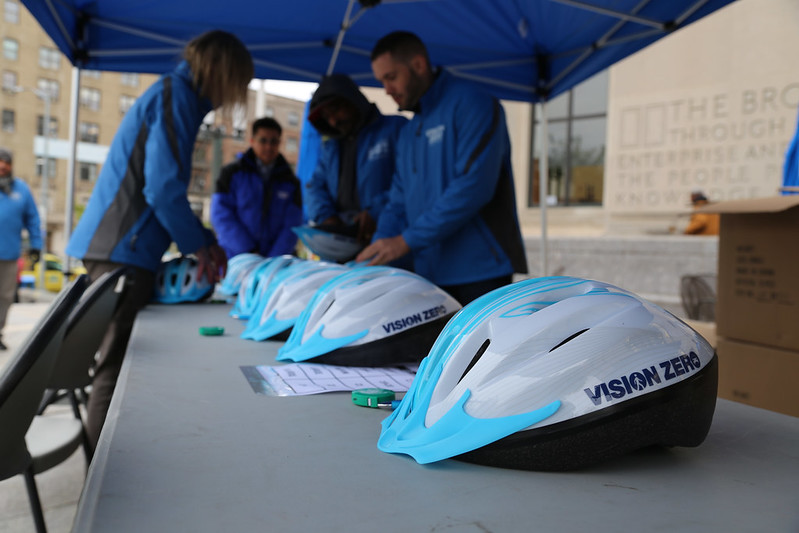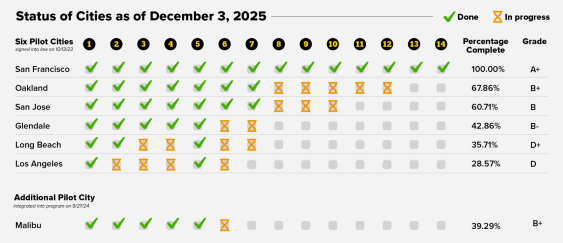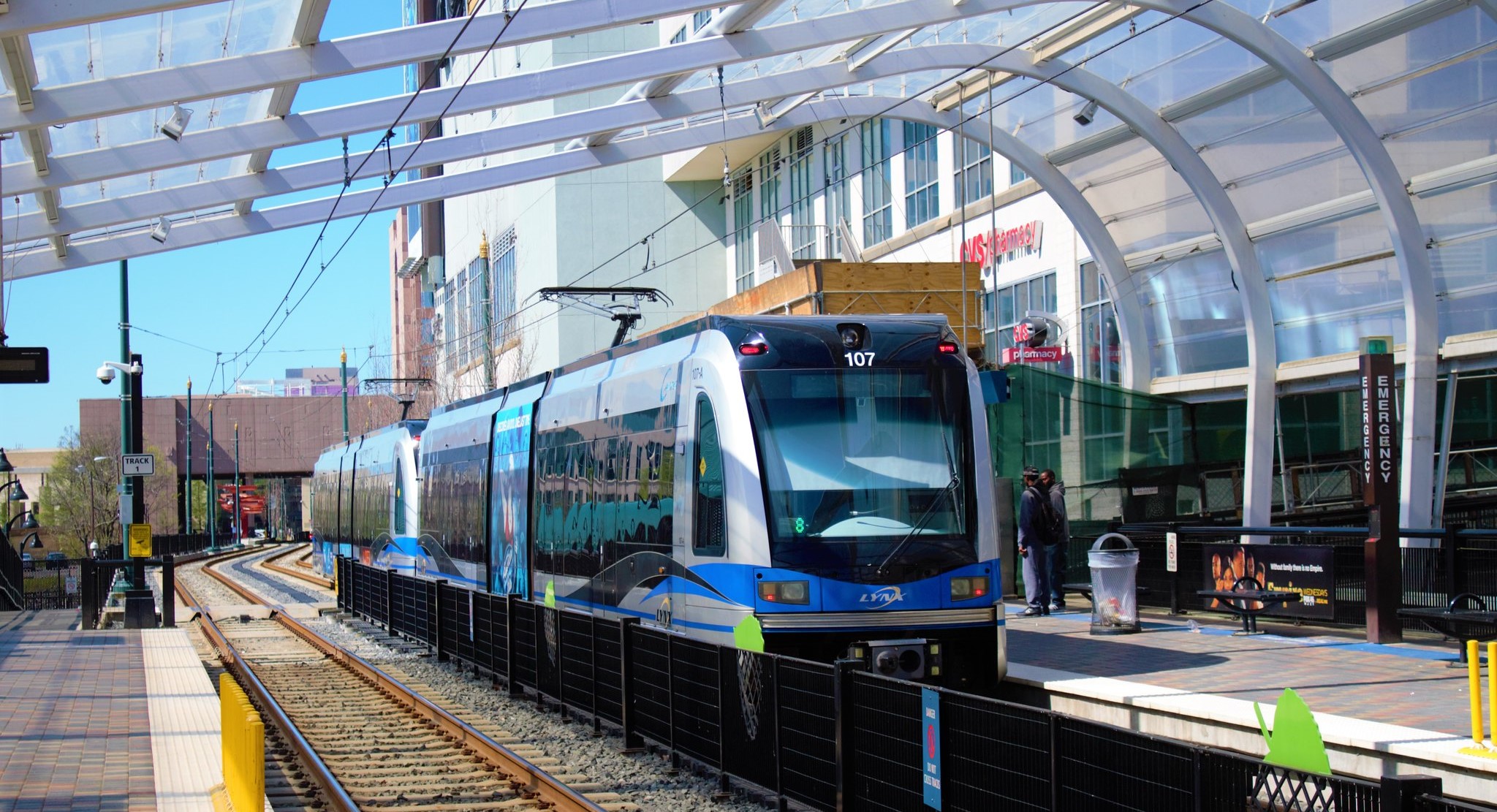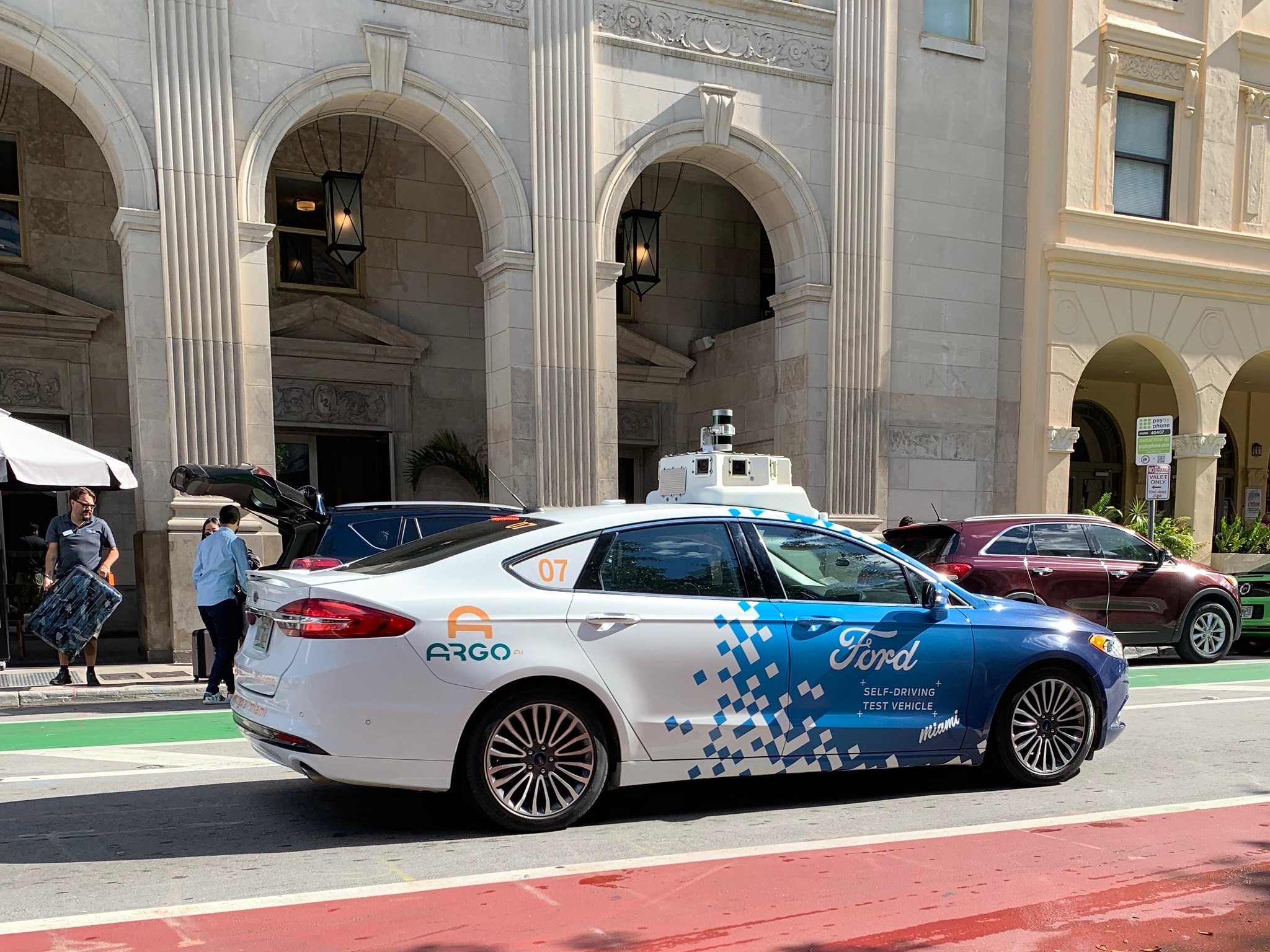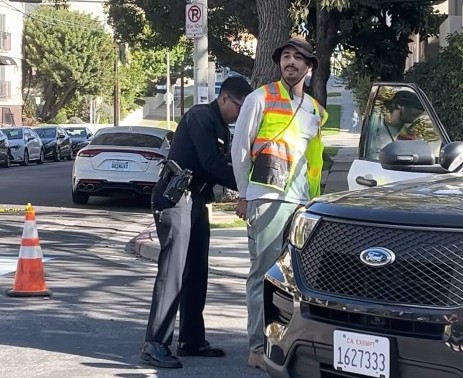There were always two excellent reasons for Seattle to ditch its law requiring people riding bicycles to wear helmets.
First, the law subjected Black, Native American and Native Alaskan people to disproportionate punitive policing, with nearly half of the $30 summonses issued to unhoused people.
Second, it suppressed cycling, depriving Seattle of the full range of cycling’s benefits to health, environment and transportation, and making bicycling riskier by diminishing the power of safety-in-numbers.
Seattle drops bike helmet law after police disproportionately issued tickets to POC and unhoused people. Critical say the law reduced injuries. Solution: The city should build a protected bikeway network to make helmets unnecessary.https://t.co/bwAUaEYNh7 @equiticity
— John Greenfield (@greenfieldjohn) February 21, 2022
Based on the Seattle Times’ coverage, it appears that the King County Board of Health only cited the first reason when it voted on Feb. 17 to scrap the helmet rule. It’s great that the board publicly condemned nefarious and discriminatory uses of the regulation by the police, but its failure to cite the second reason is jarring to anyone who, like the two of us, strives to consider cycling and health holistically.
To the extent that health officials and news reports mentioned the repeal’s implications for public health, those were assumed to be negative. Here’s the Seattle Times’ obligatory discouraging word from an emergency medicine provider:
Dr. Steven Mitchell, medical director of the emergency department at Harborview Medical Center, said his opposition to the repeal is rooted in his daily experiences with people who’ve suffered a head injury. “I worry that the culture of people who are riding their bicycles will begin to shift away from the absolute necessity to wear them every single time,” he said in an interview.
We’ll come back to Mitchell and Harborview later, after we place the Seattle repeal in a larger social-justice context. As Streetsblog USA’s Kea Wilson pointed out last year, campaigns are spreading across the country to rescind other victimless traffic laws — against so-called "jaywalking," and demanding bicyclists stop, as opposed to yield, at stop signs. These laws are misguided for multiple reasons. They misdirect enforcement resources from dangerous driving. They thicken society’s brain-fog that equates self-risk with endangering others.
Still, it’s the inequitable enforcement of these laws that seems to create the greatest traction for reform. To cite just a few examples:
- In San Clemente, Calif., in 2020, a county deputy killed Kurt Andras Reinhold, a homeless Black man whom he stopped for jaywalking.
- In Sacramento in 2017, a policeman, falsely thinking that Nandi Cain Jr., a Black man, was jaywalking, punched him 18 times in the face; an ensuing Sacramento Bee investigation found that Blacks were being tagged with summonses five times more often than non-Black "jaywalkers."
- And just this week, the city of Atlanta paid $1.5 million to Ju’Zema Goldring, a Black transgender woman whom police jailed for six months in 2015 on a bogus drug-possession charge following a pretextual jaywalking stop.
Good riddance to these laws. But helmet laws have a further twist: they discourage bicycling.
Precisely how much isn’t fully settled, partly because the extent varies with culture, population and the severity of enforcement. But just about all of us know someone who won’t wear a helmet. They’re expensive. (The Seattle Times illustrated its story on the helmet law repeal with a photo of helmets for sale, starting at $129). They muss people’s hair. To the uninitiated, they look and feel dorky. They’re a nuisance to store or carry around. Or whatever. The fact is that some people ride less or not at all if they know they have to wear a helmet. The most studied helmet law, covering Australia’s most populous state, New South Wales, in the 1990s, reportedly triggered a one-third reduction in cycling among those who formerly rode bare-headed.
Having to wear a helmet also fosters the perception that bicycling is dangerous, giving it the aura of an activity suitable only for the most daring. Ironically, this thinking is self-fulfilling, for if only risk-taking people continue bicycling, then bicycling becomes more risky.
Most severe injuries to people bicycling involve a motorist colliding with them — unsurprisingly, given that a 50- or 100- or 200-pound person traveling at 10 or 15 mph has a very small fraction of the injury-producing energy of a 45-mph, 4,000-pound vehicle. Hence, safety for people bicycling requires addressing these collisions, not questioning what they wear on their heads.
Intuitively, people who ride bicycles recognize that they’re safer wherever and whenever more people bicycle. One of us (Jacobsen) began defining and quantifying this phenomenon more than 20 years ago, and dubbed it “safety in numbers.” Perhaps paradoxically, safety in numbers means that repealing helmet mandates almost invariably makes each individual bicyclist safer. There’s plenty of evidence that motorists are a lot less likely to collide with people bicycling in locations where more people bicycle. This factor is large; the risk between California cities with high and low volumes of people cycling varies by a factor of 10.
Chief among the reasons for safety in numbers is this: humans more readily detect common things, and hence where bicyclists are rare, motorists have difficulty detecting them. And even when motorists in car-dominated places do see people walking or cycling, they’re more likely to view them as aberrations and to treat them with less care.
Safety in numbers means that if half of people cycling do so bare-headed, and if half of them stop riding rather than don a helmet, the risk to any given person bicycling of being struck by a motorist increases by an estimated 13 percent. Conversely, a repeal of a helmet mandate, as in Seattle, would be expected to reduce the per-person risk of suffering a serious-injury crash with a motorist by 16 percent. (Komanoff’s 2012 Streetsblog post, A Compulsory Helmet Law Won’t Make NYC Cyclists Safer, has a table and link to a handy spreadsheet with these calculations.)
Repealing helmet mandates also helps make people healthier by giving them greater access to cycling. Many studies have shown that the health benefits of bicycling far outweigh the health harm of injuries. The Copenhagen Heart Study, which followed over 30,000 people for nearly 15 years, asked about physical activity. In Copenhagen, where now 62 percent of people bicycle to work, the researchers had the foresight to ask how participants commuted. They found that bicycling to work decreased the risk of annual mortality by around 40 percent. That’s close to the proverbial Fountain of Youth. (The findings sound more jarring in the inverse, with commuting by car shown to raise the risk of mortality by 67 percent.)
So there are plenty of reasons to applaud the King County Board of Health for rescinding its helmet mandate. Equity. Cyclist safety. Expanded physical activity with all of its benefits. And the myriad transportation and environmental benefits from dialing back motor travel. And this as well: Seattle’s Harborview Medical Center practically launched the movement to ban bareheaded cycling in the U.S. with a well-publicized study that grossly inflated helmets’ brain-protective capacities in high-energy crashes.
To Harborview’s ER physician Mitchell, we offer the balm that by unlocking one of the bars to cycling, the helmet-law repeal will lighten the burdens on his colleagues in pulmonary medicine, heart disease and dementia. We encourage Mitchell to take a celebratory bike ride, with whatever he wants on his head, when the repeal takes effect in mid-March.
Peter Jacobsen, a Californian and the chief promulgator of the safety-in-numbers paradigm for cycling and walking, and Charles Komanoff, a longtime leading cycling proponent in New York and frequent Streetsblog contributor, have collaborated on journal articles and advocacy strategizing since meeting at the national pro-bike conference in Portland in 1994.
